10 Reasons For Concern About Your Child’s Fever (Tips for African Parents)
By Promise Oladejo, Freelance Health Writer. Medically reviewed by: Temitope Oyetunji MBBS, FWACP (Family Medicine).

Unwell child with fever having a temperature check in bed by his father. Image credit: Freepik
Fever is a natural response to infections, helping the body fight off harmful pathogens. However, not all fevers are harmless, and some may indicate a serious underlying illness. As a parent, it is important to know when to be concerned and seek medical attention. This guide highlights 10 warning signs that require urgent care, helping African parents make informed decisions about their child’s health.
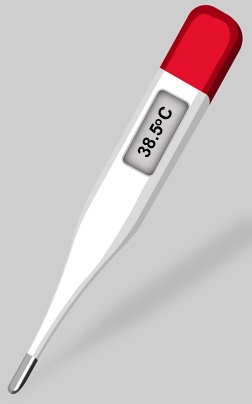
Thermometer showing fever in tthe high range.
A mild fever is usually not dangerous, but a high fever exceeding 38°C (100.4°F) can be a sign of severe infection. High fevers may result from bacterial or viral infections such as malaria, pneumonia, or GIT infections.
If left unmanaged, a persistent high fever can lead to:
You should closely monitor your child’s temperature and seek medical attention if a fever exceeds 39°C. If the fever does not subside with home care or medication, seek medical advice immediately.
.jpg)
Image with caption saying: "Fever over three days"
Most viral fevers resolve within a few days. However, if your child’s fever persists for more than three days, it could indicate a bacterial infection such as pneumonia, urinary tract infection (UTI), or more serious conditions like malaria or typhoid fever (1). Prolonged fever can also be a sign of hidden infections, such as ear infections or tuberculosis. Parents should not assume that all fevers will resolve on their own. If the fever continues beyond three days, see a healthcare professional to determine the underlying cause and provide appropriate treatment.
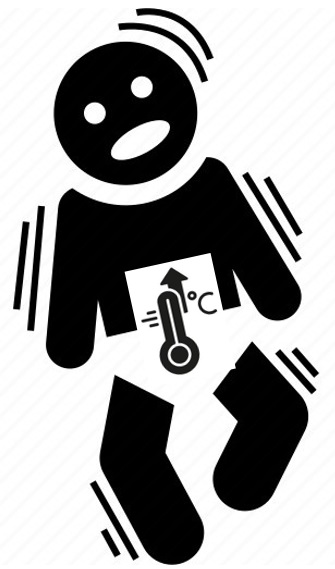
Cartoon illustration fiberile convulsion
Febrile seizures (Uncontrollable shaking with fever) are frightening but relatively common in children between 6 months and 5 years old (2). These seizures occur when a child's body temperature rises too quickly. While most febrile seizures last less than five minutes and do not cause long-term harm, parents should take any seizure episode seriously.
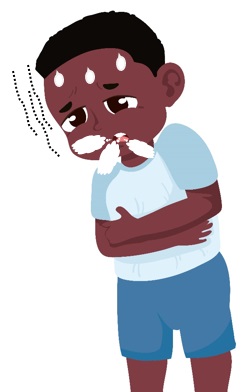
Cartoon illustration: Child showing tachypnea (abnormally fast and shallow breathing)
Fever accompanied by shortness of breath, rapid breathing (tachypnoea), or wheezing may indicate a serious respiratory infection such as pneumonia or bronchitis (3). Children with asthma or pre-existing lung conditions are at a higher risk of complications. Parents should watch for warning signs such as chest retractions (sinking of the skin between the ribs when breathing), flaring nostrils, or bluish lips which could mean your child is struggling to get enough oxygen. If you notice any of these, take them to the hospital immediately for urgent care.
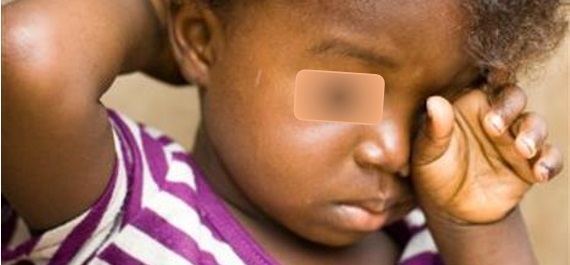
Image of a moderately dehydrated child looking tired with low energy.
Fever increases fluid loss, which can lead to dehydration (4). Dehydration is especially dangerous in young children, as their bodies lose water rapidly. Depending on the age of your child and severity, signs of dehydration include:
Encouraging fluid intake is crucial, whether through breast milk, oral rehydration solutions (ORS), or clear soups. If your child is unable to keep fluids down or shows signs of dehydration, seek medical help immediately.
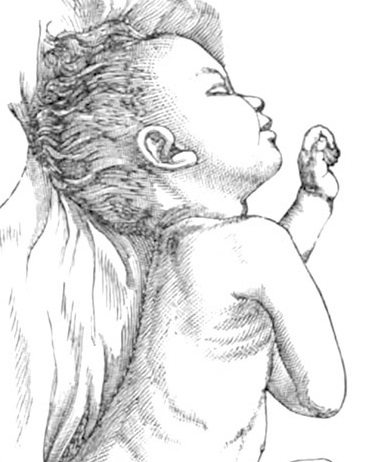
Illustration: Child with stiff neck. Image credit: MedlinkNeurology
A fever accompanied by a severe headache, a stiff neck, or sensitivity to light could indicate meningitis, a life-threatening infection of the brain and spinal cord (5). Meningitis can progress rapidly, leading to seizures, coma, and death if untreated. Parents should be especially cautious if their child also develops vomiting, confusion, or an unusual rash. Immediate hospital care is necessary needed to begin prompt treatment.

Cartoon illustration: A squatting black child with diarrhoea (i.e., passing loose stool).
Frequent vomiting or diarrhoea can quickly lead to severe dehydration and electrolyte imbalances (6). Gastrointestinal infections, including rotavirus, typhoid fever, and foodborne illnesses, are common causes. If a child experiences constant vomiting or has more than six episodes of diarrhea in 24 hours, they are at high risk of losing essential fluids and nutrients. Parents should avoid giving sugary drinks and instead offer oral rehydration solutions or diluted fruit juices. Seek medical care if vomiting persists or if there’s blood in your child’s stool.
.jpg)
An African child with measles rash on his face.
Certain skin rashes associated with fever can indicate serious infections such as measles, meningitis, or dengue fever (7). Watch out for:
Fever-related rashes should always be examined by a doctor, especially if they spread rapidly or cause pain and irritation.

Unresponsive young child in recovery position on the floor. Image credit: FirstAidforLife.
If your child is unusually drowsy, difficult to wake up, confused, or unresponsive, this may indicate a serious condition such as sepsis, severe malaria, or encephalitis. A healthy child with a fever may still be playful and alert, but extreme drowsiness or loss of consciousness requires immediate medical intervention. Look for additional danger signs such as shallow breathing, extreme irritability, or seizures, as these symptoms suggest a worsening condition.
Children with underlying chronic diseases have increased odds to develop fever. Click on image to enlarge.
Children with chronic conditions such as sickle cell disease, asthma, heart disease, or weakened immune systems are at a higher risk of developing serious complications from fever (8). Parents of children with these conditions should monitor fevers more closely and consult a doctor earlier than usual. Severe bacterial infections can progress quickly in children with weakened immune systems. Always inform healthcare providers about your child’s medical history to ensure appropriate treatment.
Parents and caregivers should seek immediate medical attention if a child with fever exhibits any of the following warning signs (9):
While most childhood fevers are mild and resolve on their own, some symptoms indicate serious illnesses requiring immediate medical attention (8). High fever, breathing difficulties, seizures, and dehydration are just a few of the warning signs parents should not ignore. By recognizing these danger signs and seeking timely medical care, African parents can protect their children from life-threatening complications.
1. D'acremont V, Kilowoko M, Kyungu E, Philipina S, Sangu W, Kahama-Maro J, Lengeler C, Cherpillod P, Kaiser L, Genton B. Beyond malaria—causes of fever in outpatient Tanzanian children. New England Journal of Medicine. 2014 Feb 27;370(9):809-17. Accessed from here.
2. Nooh F, Chernet A, Reither K, Okuma J, Brattig NW, Utzinger J, Probst-Hensch N, Paris DH, Dreyfus A. Prevalence of fever of unidentified aetiology in East African adolescents and adults: a systematic review and meta-analysis. Infectious Diseases of Poverty. 2023 May 25;12(1):55. Accessed from here.
3. Ssentongo P, Chinchilli VM, Shah K, Harbaugh T, Ba DM. Factors associated with pediatric febrile illnesses in 27 countries of Sub-Saharan Africa. BMC Infectious Diseases. 2023 Jun 12;23(1):391. Accessed from here.
4. Adesegun OA, Adeyemi OO, Ehioghae O, Rabor DF, Binuyo TO, Alafin BA, Nnagha OB, Idowu AO, Osonuga A. Current trends in the epidemiology and management of enteric fever in Africa: a literature review. Asian Pacific Journal of Tropical Medicine. 2020 May 1;13(5):204-13. Accessed from here.
5. Fernandes JF, Held J, Dorn M, Lalremruata A, Schaumburg F, Alabi A, Agbanrin MD, Kokou C, Ben Adande A, Esen M, Eibach D. Causes of fever in Gabonese children: a cross-sectional hospital-based study. Scientific reports. 2020 Feb 7;10(1):2080. Accessed from here.
6. Boillat-Blanco N, Mbarack Z, Samaka J, Mlaganile T, Kazimoto T, Mamin A, Genton B, Kaiser L, D'Acremont V. Causes of fever in Tanzanian adults attending outpatient clinics: a prospective cohort study. Clinical Microbiology and Infection. 2021 Jun 1;27(6):913-e1. Accessed from here.
7. Adeboye A, Yusuf RA, Ige OK. Fever: a literature review of perceptions, perspectives and practices. J Tradit Med Clin Naturop. 2017;6:249. Accessed from here.
Maze MJ, Bassat Q, Feasey NA, Mandomando I, Musicha P, Crump JA. The epidemiology of febrile illness in sub-Saharan Africa: implications for diagnosis and management. Clinical Microbiology and Infection. 2018 Aug 1;24(8):808-14. Accessed from here.
9. Laupland KB. Fever in the critically ill medical patient. Critical care medicine. 2009 Jul 1;37(7):S273-8. Accessed from here.
Related:
Published: June 2, 2025
© 2025. Datelinehealth Africa Inc. All rights reserved.
Permission is given to copy, use and share content freely for non-commercial purposes without alteration or modification and subject to source attribution.
DATELINEHEALTH AFRICA INC., is a digital publisher for informational and educational purposes and does not offer personal medical care and advice. If you have a medical problem needing routine or emergency attention, call your doctor or local emergency services immediately, or visit the nearest emergency room or the nearest hospital. You should consult your professional healthcare provider before starting any nutrition, diet, exercise, fitness, medical or wellness program mentioned or referenced in the DatelinehealthAfrica website. Click here for more disclaimer notice.